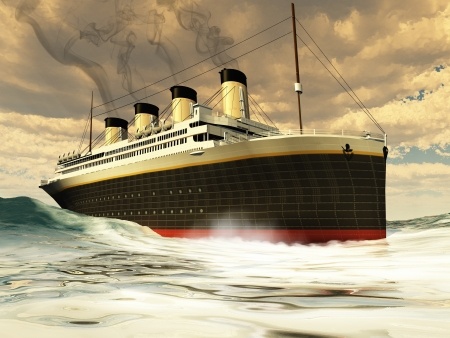It’s been over a century since the RMS Titanic sunk in icy Atlantic waters. The tragedy was a result of a number of circumstances, many of which could have been prevented. However, these circumstances collided to produce the tragic sinking of the passenger liner. Here are 5 lessons to take to keep your organization running in top form.
1. Know Your WeaknessesThe Titanic was widely promoted to be “unsinkable,” due to state of the art watertight compartments which were made to contain a hull breach and allow the ship to continue on its course. However, due to the placement and size of the breach, the compartments were overwhelmed.
As a CEO, read the fine print of your products and services so that you understand and appreciate your weaknesses. This helps you plan for failures to pave the way toward success.
2. Look Ahead.
Don’t miss a problem because you only see a small portion of it. Small symptoms may be endemic. The crew on the Titanic spotted an iceberg too late to allow the ship to turn around.
3. Be careful of the newest, best thing.
The Titanic’s maiden voyage carried many of the world’s wealthiest. Do your research for yourself to know what is right for your company. Maybe it’s the newest, shiniest technology or maybe it’s something tried and true.
4. Communication is key.
The Titanic carried far too few lifeboats to handle the passengers and crew. Although the number of lifeboats onboard did actually exceed what was legally required at the time, the ship had capacity to carry enough lifeboats for every occupant, which could have prevented massive loss of life. A ship came to the rescue only two hours after the Titanic buckled. Well over a thousand people could have been saved had there been enough lifeboats. Even so, the thinking was that lifeboats would be used to ferry survivors from a sinking ship to a rescuing ship and back, making multiple trips to carry all of the survivors. However,
5. Be ready to maneuver.If you see an obstacle, be ready to change course quickly. The bigger your organization, the harder it is to change direction. But as markets change quickly, companies need to be able to adjust pricing, methods, technology, etc. A company that is light on its feet may make the difference between sinking and rising to the top.







Let Us Know What You Thought about this Post.
Put your Comment Below.